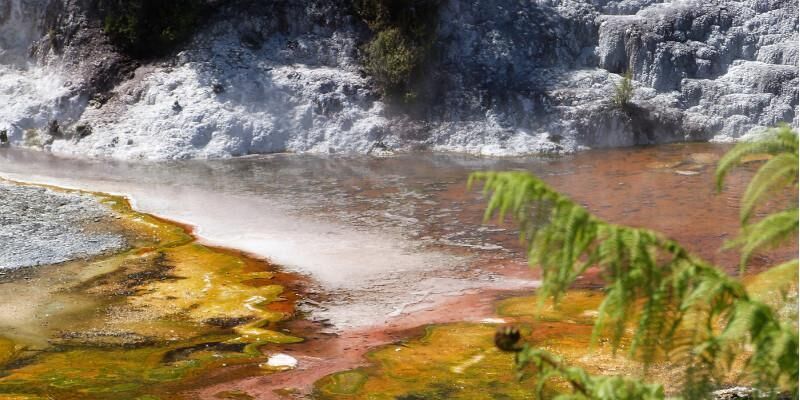
Today our world is visually dominated by animals and plants, but this world would not have been possible without fungi, say University of Leeds scientists.
Researchers have carried out experiments where plants and fungi are grown in atmospheres resembling the ancient Earth and, by incorporating their results into computer models, have shown that fungi were essential in the creation of an oxygen-rich atmosphere.
Humans and other mammals require high levels of oxygen to function, and it is generally thought that the planet developed an oxygen-rich atmosphere around 500 to 400 million years ago, as carbon dioxide was gradually photosynthesised by the first land plants.
The research team: Dr Katie Field from the Centre for Plant Sciences, Dr Sarah Batterman from the School of Geography and Dr Benjamin Mills from the School of Earth and Environment, show that fungi played a critical part in establishing the breathable atmosphere on Earth by "mining" the nutrient phosphorus from rocks and transferring it to plants to power photosynthesis.
The new research shows that the amount of phosphorus transferred could have been very large under the ancient atmospheric conditions, and, using an "Earth system" computer model, the team show that fungi had the power to dramatically alter the ancient atmosphere.
Vital relationship
While many modern plants can gather their nutrients direct from soils through their roots, the earliest forms of plant life faced an entirely different climate, did not have roots and were non-vascular, meaning they could not hold water or move it around their system.
The "soil" they came into contact with was a mineral product lacking in organic matter, which is why their relationships with fungi were so important.
Fungi have the ability to extract minerals from the rocks they grow on through a process known as biological weathering. The fungi express organic acids which help to dissolve the rocks and mineral grains they grow across.
By extracting these minerals and passing them on to plants to aid the plants’ growth, the fungi in return received the carbon the plants produced as they photosynthesised carbon dioxide from the atmosphere.
Gas exchange
Lab experiments undertaken by the Leeds team have shown that different ancient fungi, which still exist today, conducted these exchanges at different rates, which influenced the varied speeds at which plants produced oxygen.
In turn this affected the speed at which the atmosphere changed from being much more rich in carbon dioxide to becoming similar to the air we breathe today.
Dr Field said: “We used a computer model to simulate what might have happened to the climate throughout the Palaeozoic era if the different types of early plant-fungal symbioses were included in the global phosphorus and carbon cycles.
“We found the effect was potentially dramatic, with the differences in plant-fungal carbon-for-nutrient exchange greatly altering Earth’s climate through plant-powered drawdown of CO2 for photosynthesis, substantially changing the timing of the rise of oxygen in the atmosphere.”
Dr Mills said: “Photosynthesis by land plants is ultimately responsible for about half of the oxygen generation on Earth, and requires phosphorus, but we currently have a poor understanding of how the global supply of this nutrient to plants works.
“The results of including data on fungal interactions present a significant advance in our understanding of the Earth’s early development. Our work clearly shows the importance of fungi in the creation of an oxygenated atmosphere.”
Dr Batterman added: “Our study shows tiny organisms such as fungi can have major effects on the global environment. Our critical finding was that the nature of the relationship between fungi and plants could have transformed the atmospheric carbon dioxide, oxygen and ultimately global climate in very different ways, depending on the type of fungi present.”
The full paper Nutrient acquisition by symbiotic fungi governs Palaeozoic climate transition is published in the Royal Society’s Philosophical Transactions B journal.
The research team is funded by the Natural Environment Research Council and the Biotechnology and Biological Sciences Research Council.
Further information
Dr Field is available for interview, and images can be provided if required. Contact Peter Le Riche in the University of Leeds press office on 0113 343 2049 or email p.leriche@leeds.ac.uk
The above picture shows the Rhynie Chert in Scotland, where many prehistoric fungi which still survive today can be found.